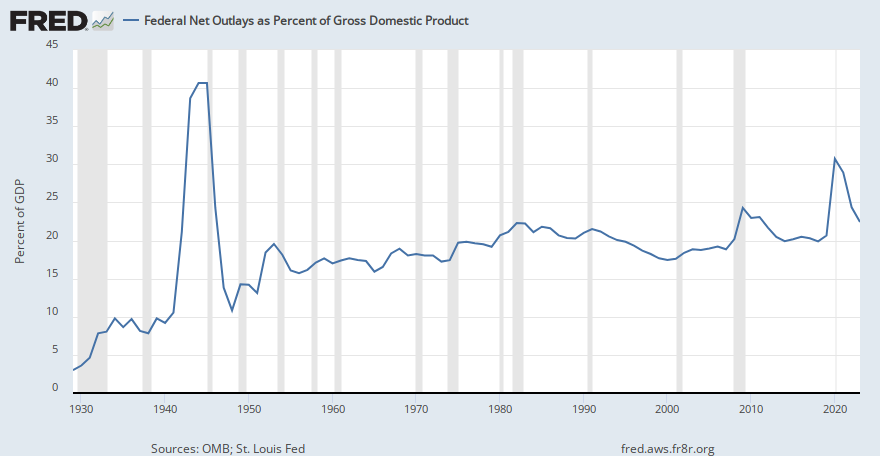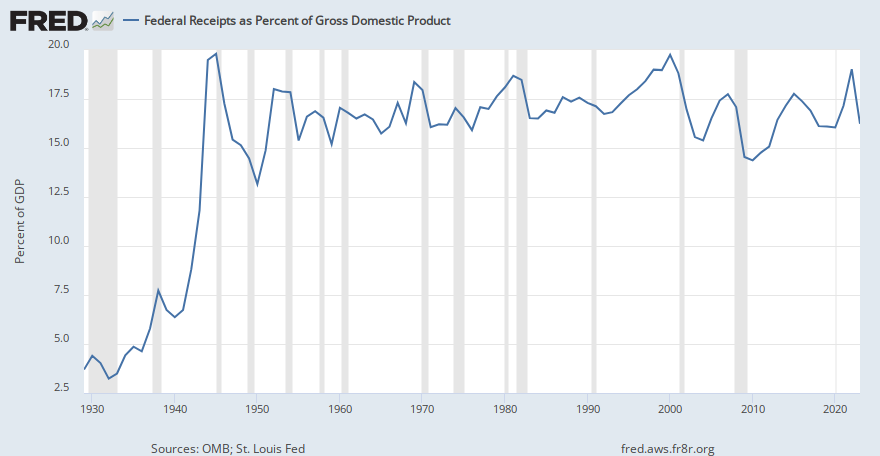I thought that SS did not contribute to the 38T debt.
Sort of. That's the way it's purported to be. But like a lot of things, it doesn't really work the way it's represented.
For decades, it did work as designed. During that time frame, the baby boomers drove both population increases and income increases as they progressed up the value-added ladder. The resultant and consistently increasing contributions drove massive increases in the Social Security Trust Fund.
I've seen lots of charts showing various numbers, but at the beginning, there were something like 20+ workers contributing to each retiree's benefits.
All those big annual surpluses were required by law to be invested in US Treasury obligations. Ostensibly, that was for safety -- after all, what's safer than Treasuries? Really, it was to provide a ready-made and massive appetite for Treasury debt without making us vulnerable to foreign countries' machinations on exchange and interest rates.
Well, the worm started turning in 2011 when the first boomers (born in 1946) started retiring at age 65 -- you could make an argument that it first started in 2008 when the first post-war babies became eligible to draw early benefits at age 62.
Regardless, there now are fewer than five (maybe three?) workers contributing to each retiree's benefits.
So over time, current receipts were used more and more to pay current outlays and less and less to buy US Treasuries. So the market for Treasuries began to shrink and the appetite had to be fed by foreign borrowers.
That's been going on for a while now, accelerating as time goes on. So the surplus built up over decades has been whittled down and is now getting low. There are lots of estimates as to when it will be depleted, but it's coming.
When it happens, and assuming the status quo, you will have a whipsaw. Not only with the SSI trust fund not be buying Treasuries anymore at all, but more Treasuries will have to be issued to cover the gap.
Or retirees' benefits will be cut....which I'd bet a bunch of money the noodle-spines in DC will never let happen. Not only does it break a promises, but the bluehairs and pinkheads vote. It would be political suicide. So there might be a standoff, but soon enough they will fill the gap with the proceeds from selling more debt.
So like I said, the program was constructed, and is still billed, as self-sustaining. It used to be. It's been less and less so for some time now. Soon it won't be at all. When that happens, you get some serious operating leverage working the nasty way.









